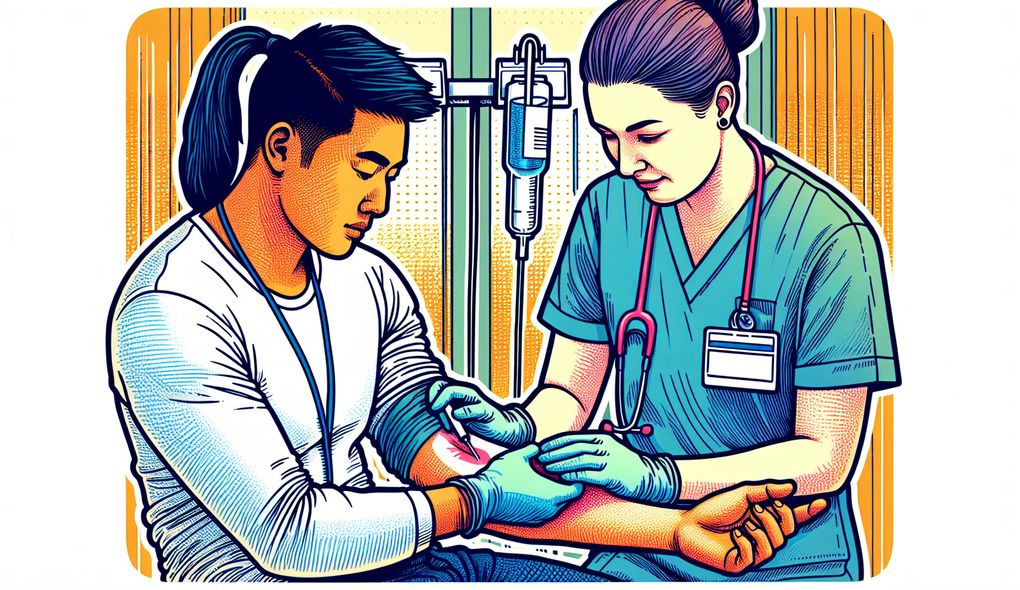Give an example of a time when you had to troubleshoot and resolve issues with wound care technology or equipment.
INTERMEDIATE LEVEL

Sample answer to the question:
In my previous role as a Wound Care Specialist, I encountered an issue with a negative pressure wound therapy (NPWT) system. The system wasn't producing suction, which was essential for the wound healing process. To troubleshoot the issue, I first checked all the connections and made sure everything was securely attached. When that didn't solve the problem, I inspected the system's tubing for any kinks or blockages. I found that a small piece of debris was obstructing the flow, which was easily cleared. The system started working properly again, and the patient's wound healing progress continued. I documented the issue and the resolution in the patient's medical record to ensure accurate records and continuity of care.
Here is a more solid answer:
In my previous role as a Wound Care Specialist, I encountered a specific issue with a negative pressure wound therapy (NPWT) system. One of our patients had a deep wound that required continuous suction for optimal healing. However, the NPWT system suddenly stopped producing suction. I immediately accessed the system to identify the cause of the issue. I carefully inspected all the connections, tubing, and seals to ensure everything was securely attached and intact. After thorough examination, I noticed a small tear in the tubing, which was causing the loss of suction. I quickly replaced the damaged tubing and tested the system to ensure it was functioning properly. The patient's wound healing progress resumed, and the issue was resolved. I documented this incident in the patient's medical record and reported it to the wound care team for quality improvement purposes.
Why is this a more solid answer?
The solid answer provides a more detailed example of troubleshooting a wound care technology issue. It includes specific details about the candidate's actions, such as inspecting connections and tubing, identifying the cause of the issue, and taking prompt corrective action. The answer also highlights the candidate's attention to detail and focus on patient care. However, it could still be improved by discussing the impact of the issue on the patient and the significance of accurately documenting such incidents.
An example of a exceptional answer:
During my time as a Wound Care Specialist, I encountered a complex issue with an advanced wound dressing material that required thorough troubleshooting and resolution. A patient with a chronic wound was prescribed a new type of dressing that was known for its effectiveness in promoting healing. However, after a few days of using the dressing, the patient started experiencing increased pain and redness around the wound area. As part of my role, I immediately assessed the wound and realized that the advanced dressing was causing an allergic reaction. To resolve the issue, I carefully removed the dressing, cleansed the wound area with a gentle antiseptic solution, and applied a more suitable dressing material. I closely monitored the patient's progress and conducted regular wound assessments to ensure proper healing. Additionally, I documented this incident, including details of the patient's reaction and the alternative dressing used, in their medical record. I also reported the issue to our wound care team to raise awareness and prevent similar occurrences in the future.
Why is this an exceptional answer?
The exceptional answer provides an in-depth example of troubleshooting and resolving an issue with wound care technology that goes beyond a simple equipment malfunction. It demonstrates the candidate's ability to identify and address complex issues, such as allergic reactions, and provides specific details about their actions and the impact on patient care. The answer also highlights the candidate's commitment to documentation and quality improvement. This answer effectively showcases the candidate's clinical skills, problem-solving abilities, attention to detail, and commitment to patient safety. However, it could still benefit from further discussion of the candidate's collaboration with the healthcare team to ensure the best outcome for the patient.
How to prepare for this question:
- Review and familiarize yourself with different wound care technologies and equipment, including common issues they may encounter.
- Reflect on any previous experiences you have had with troubleshooting wound care technology or equipment and think about the lessons learned and outcomes achieved.
- Practice explaining your troubleshooting methods and problem-solving process to highlight your critical thinking skills.
- Demonstrate your ability to document incidents accurately and comprehensively, emphasizing the importance of effective communication in providing quality patient care.
- Stay updated with the latest advances in wound care technology and products, and be prepared to discuss how you integrate new findings into your clinical practice.
What are interviewers evaluating with this question?
- Strong clinical skills
- Knowledge of wound care technology and products
- Problem-solving abilities
- Detail-oriented

